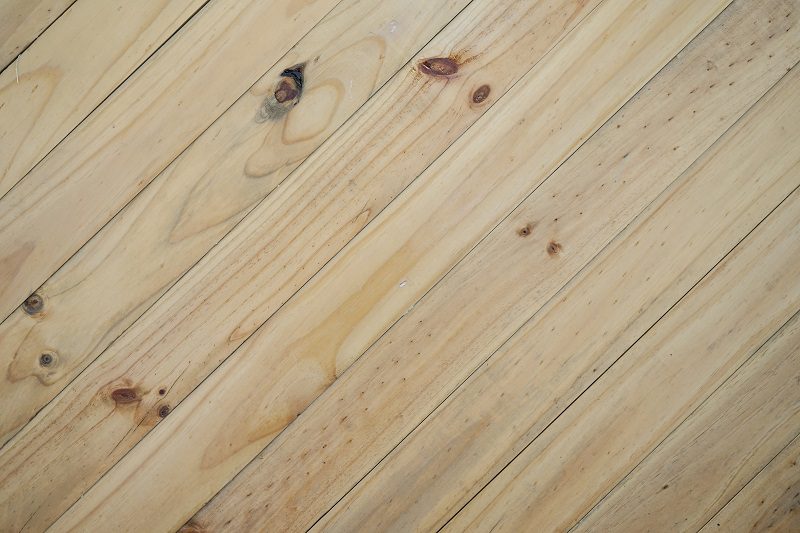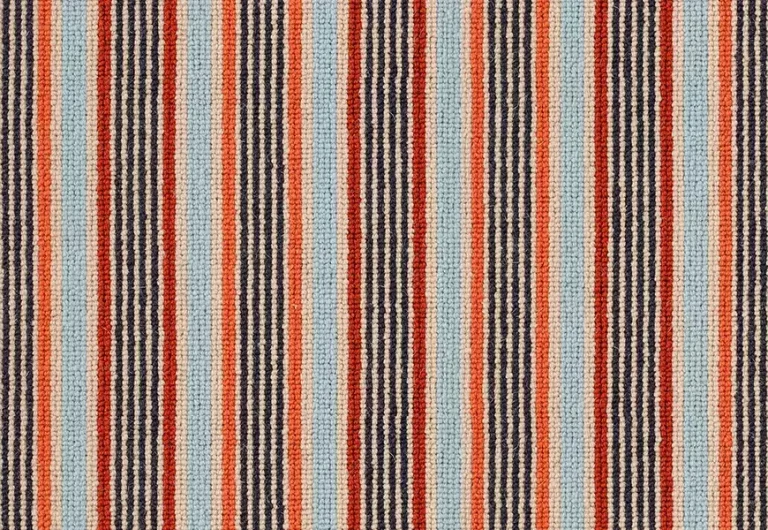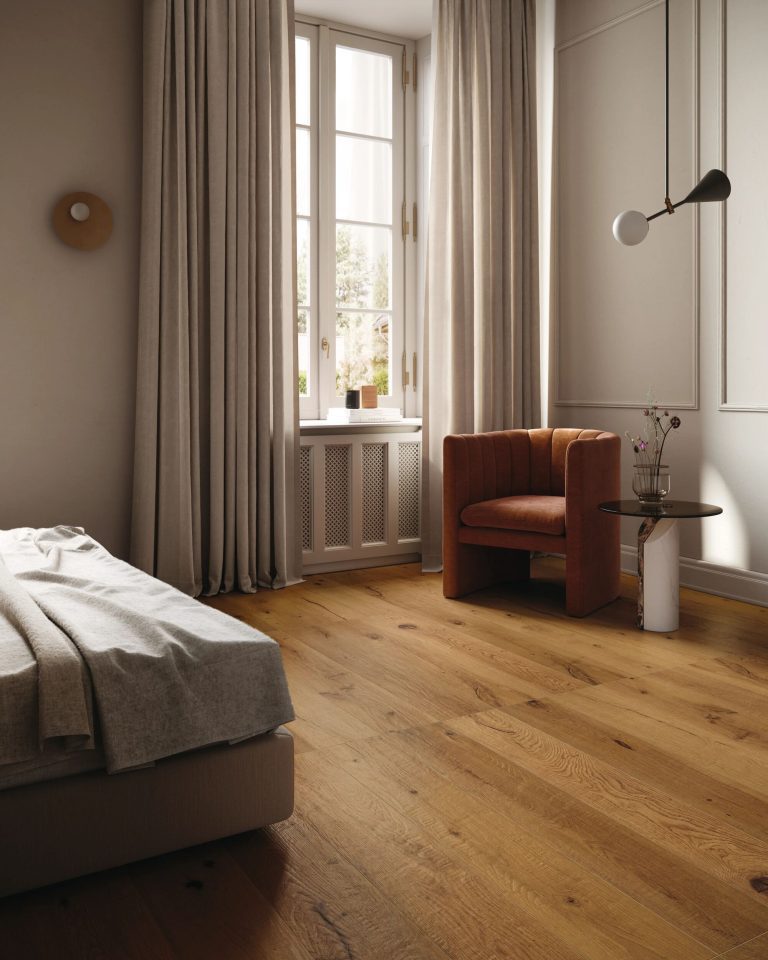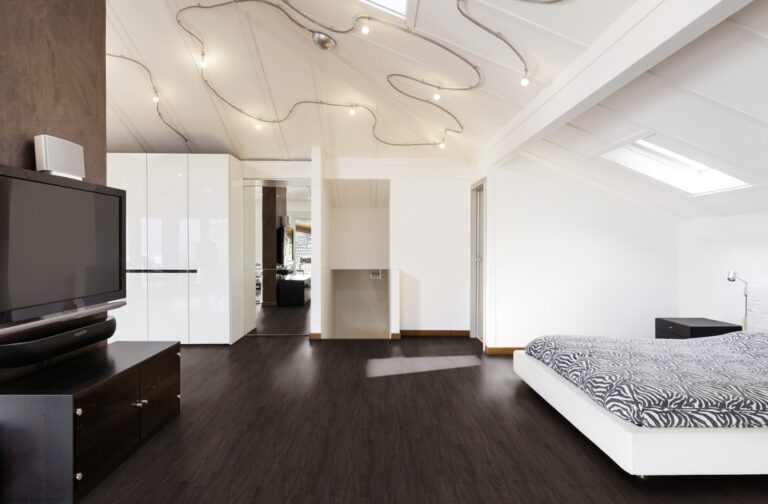If you are considering upgrading your flooring, you may have come across engineered wood flooring as an option. In this article, we will explore the different types of engineered wood flooring, the benefits it offers, and factors to consider when choosing the right option for your space.
We will provide tips on how to properly maintain engineered wood flooring to keep it looking its best for years to come. Let’s dive in and learn all about this versatile flooring choice!
What Is Engineered Wood Flooring?
Engineered Wood Flooring is an engineered hardwood range. It can be a versatile flooring option that combines the beauty of solid wood with the practicality of laminate flooring. It is made up of multiple layers of wood or wood composite with a layer of solid wood on top.
This unique construction provides engineered wood flooring with increased stability and resistance to moisture compared to solid wood, making it suitable for areas like kitchens and basements. Engineered wood comes in a wide range of finishes and styles, allowing homeowners to achieve the desired look without compromising durability. The layered structure also makes engineered wood more environmentally friendly, as it uses less hardwood while maintaining the aesthetic appeal of traditional wood flooring.
See product: Elka 12.5mm Real Wood Harbour Oak
How is Engineered Wood Flooring Made?
Engineered Timber Flooring is made by bonding several layers of wood or wood composite together under pressure and heat. The top layer, which can be made from various wood species like Oak or Walnut, provides the visible surface of the flooring.
In the manufacturing process of engineered timber flooring, precision is key. After selecting the top layer of wood species, the subsequent layers, known as the core and base layers, are often composed of softer wood types to enhance stability. These layers are bonded together using adhesives that are specially formulated for high strength and durability. The layering techniques involve cross-grain arrangements to minimise expansion and contraction due to changes in temperature and humidity, ensuring the flooring remains dimensionally stable over time.
Types of Engineered Wood Flooring
There are several types of Engineered Wood Flooring, including Plywood Core, HDF Core, SPC Core, and WPC Core options. Each type offers unique characteristics and benefits for different environments.
a. Plywood Core Engineered Wood Flooring
The first of engineered wood flooring types is plywood Core Engineered Wood Flooring. It is known for its durability and stability due to the multiple layers of plywood used in its construction. It offers a variety of finishes including oiled finish and unfinished planks.
This type of flooring is particularly popular due to its strong and sturdy composition, making it resistant to moisture and temperature fluctuations, and suitable for areas like kitchens, bathrooms, and basements.
The oiled finish brings out the natural beauty of the wood, enhancing its aesthetic appeal while providing a protective layer that penetrates deep into the material.
On the other hand, unfinished planks allow for customization, giving you the freedom to stain or finish the wood to match your interior design preferences.
See product: Lionvest Structural Engineered – 652 – ABCD Unfinished
b. HDF Core Engineered Wood Flooring
The second engineered hardwood flooring type is HDF Core Engineered Wood Flooring. It is valued for its affordability and versatility. It comes in various finishes such as lacquered finish, satin lacquer, and distressed finish.
One of the unique features of HDF Core Engineered Wood Flooring is its ability to mimic the look of hardwood floors while being more budget-friendly. The lacquered finish provides a smooth, glossy surface that is easy to clean and maintain, making it ideal for high-traffic areas. On the other hand, the distressed finish offers a rustic, aged appearance, perfect for creating a farmhouse or vintage aesthetic in your space.
Along with its finishes, HDF Core Engineered Wood Flooring also offers a wide range of design options, including different plank widths, lengths, and colours, allowing you to customise your flooring to suit your unique style and preferences.
c. SPC Core Engineered Wood Flooring
SPC Core Engineered Wood Flooring is known for its water resistance and durability. It is available in finishes like smoked finish and whitewashed finish, making it suitable for spaces with underfloor heating.
One of the standout features of SPC Core Engineered Wood Flooring is its exceptional water resistance, which sets it apart from traditional wood flooring options. This makes it ideal for areas prone to moisture and humidity, such as bathrooms or kitchens. The smoked finish exudes a sophisticated, charred appearance, adding a touch of elegance to any room. On the other hand, the whitewashed finish offers a bright and airy aesthetic, perfect for creating a modern and spacious feel in your home.
d. WPC Core Engineered Wood Flooring
The other engineered hardwood type is WPC Core Engineered Wood Flooring offers a balance of durability and comfort, thanks to its vinyl composite core. It comes in various species and finishes like brushed finish, catering to different design preferences.
With the vinyl composite core at its heart, this type of engineered wood flooring provides a sturdy foundation that can withstand daily wear and tear while still offering a cosy feel underfoot. The innovative construction of WPC Core Engineered Wood Flooring ensures enhanced water resistance, making it a suitable choice for areas prone to moisture. The brushed finish adds a touch of texture and character, giving the flooring a timeless look that complements both modern and traditional settings.
Benefits of Engineered Wood Flooring
Engineered Wood Flooring offers numerous benefits, including exceptional durability, high moisture resistance, easy installation processes, and cost-effective solutions for various spaces.
Along with these advantages, Engineered Wood Flooring boasts a wide range of design options, making it a versatile choice for homeowners and interior designers alike. The top layer of real wood adds a touch of elegance and warmth to any room, while the stable core provides strength and longevity.
The construction of engineered wood minimises the risk of warping and shrinking due to changes in humidity levels, ensuring a consistent and solid flooring surface over time.
a. Durability
Durability is a key benefit of Engineered Wood Flooring, attributed to the quality of the materials used in its construction. It can withstand heavy foot traffic and daily wear and tear.
Engineered wood flooring is engineered to last, offering exceptional resilience due to its layered construction, which minimises the effects of moisture and temperature changes. This construction technique involves bonding multiple layers of wood veneer together to create a strong and stable core. The top layer, crafted from high-quality hardwood, enhances the durability and provides a stunning appearance that can mimic the natural beauty of solid wood. These carefully selected materials ensure that engineered wood flooring maintains its integrity and aesthetic appeal for years to come.
b. Moisture Resistance
Engineered Wood Flooring exhibits excellent moisture resistance, making it a suitable choice for areas prone to humidity and temperature changes. This feature is enhanced when combined with underfloor heating systems.
In terms of humidity resistance, Engineered Wood Flooring outperforms solid hardwood due to its layered construction which provides stability against moisture-related issues such as warping and cupping. This makes it a perfect option for areas like kitchens, bathrooms, and basements where traditional hardwood may not fare well.
c. Easy Installation
Engineered Wood Flooring is known for its easy installation processes, which vary depending on the type of flooring chosen. From click-lock systems to glue-down methods, installation can be efficient and hassle-free.
One popular installation method involves the use of click-lock systems, where planks simply snap together without the need for adhesive, making it a quick and straightforward process. On the other hand, the glue-down technique requires securing each plank to the subfloor with an adhesive, ensuring a durable and stable fit. Some engineered wood flooring types even offer a floating installation option, where the boards are not attached to the subfloor but rather lock into place with each other, providing flexibility and easy maintenance.
Cost-Effective
Engineered Wood Flooring provides a cost-effective flooring solution, offering the aesthetic appeal of solid wood at a more budget-friendly price point. This makes it a popular choice for various renovation and construction projects.
Many homeowners and designers opt for engineered wood flooring because it delivers the same luxurious look and feel as solid wood but at a fraction of the cost. The construction of an engineered hardwood range involves multiple layers of high-quality wood, which enhances its durability and stability, making it suitable for different environments. Due to its affordability, engineered wood flooring is also a great option for commercial spaces and high-traffic areas, providing long-lasting beauty without breaking the bank.
Factors to Consider When Choosing Engineered Wood Flooring
When selecting Engineered Wood Flooring, several factors need to be considered, including the type of room where the flooring will be installed, budget constraints, preferred style and design aesthetics, and the maintenance requirements of the flooring.
Choosing the right type of wood for each room is crucial; for instance, a denser wood like oak may be more suitable for high-traffic areas. Budget implications should also be factored in, as some wood species are more costly than others. Moreover, design preferences play a significant role, with options ranging from traditional oak to modern bamboo. Maintenance needs vary based on the finish applied, with some finishes requiring more upkeep than others.
a. Room Type
The type of room where the engineered wood flooring will be installed influences the choice of wood species. For high-traffic areas like living rooms, durable options such as Oak or Walnut are recommended.
These wood species are known for their resilience to wear and tear, making them ideal for spaces that receive constant foot traffic. Oak, with its sturdy nature and prominent grain patterns, adds a classic touch to the ambience of a room. On the other hand, Walnut offers a rich, luxurious appearance that can elevate the aesthetic appeal of any space. The versatility of these species allows them to complement various interior design styles, ensuring both durability and beauty in the long run.
b. Budget
Budget plays a significant role in selecting the appropriate engineered wood flooring, as different materials and finishes come at varying price points. Understanding budget constraints helps in narrowing down the options.
For those aiming for a luxurious look without breaking the bank, veneer finishes offer an affordable alternative that mimics the appearance of solid wood. On the other hand, high-quality hardwood veneers are more durable and have a natural aesthetic appeal, but often come with a higher price tag.
For those on a tighter budget, laminate finishes provide a cost-effective option that can still deliver a stylish finish. They are also more resistant to scratches and moisture, making them a practical choice for high-traffic areas. Learn more about engineered wood flooring cost in 2024.
c. Style and Design
The style and design preferences of the space where the engineered wood flooring will be installed dictate the choice of flooring type. Different types offer various textures, finishes, and patterns to suit diverse aesthetics.
For example, if you are looking to create a cosy and rustic atmosphere, opting for distressed engineered wood with hand-scraped textures can enhance the warmth and character of the room. On the other hand, a sleek and modern space might benefit from a high-gloss finish that reflects light, making the room appear brighter and more spacious. The patterns available can range from traditional herringbone to contemporary geometric designs, providing endless possibilities for expressing your unique style through your flooring choice.
d. Maintenance Requirements
The maintenance requirements of engineered wood flooring vary based on finishes and treatments. While natural oil finishes require periodic re-oiling, brushed finishes may need regular cleaning to preserve their appearance.
For natural oil finishes, it is crucial to reapply oil when the floor starts to look dry or worn, typically every 1-2 years. This helps maintain the wood’s lustre and protects it from moisture damage. On the other hand, brushed finishes necessitate gentle sweeping or vacuuming to remove dirt and debris, followed by mopping with a damp cloth using a recommended floor cleaner. Avoid using harsh chemicals that can damage the finish.
How to Maintain Engineered Wood Flooring Properly
Maintaining Engineered Wood Flooring involves regular cleaning practices, avoiding excessive moisture exposure, utilising protective pads and mats in high-traffic areas, and considering refinishing options when needed.
In terms of cleaning your engineered wood flooring, a gentle sweep or vacuum with a soft brush attachment is ideal for removing dust and dirt particles that can scratch the surface. For deeper cleaning, it’s important to use a damp mop and a recommended wood floor cleaner, ensuring that excess water is avoided to prevent warping.
To prevent moisture damage, it’s crucial to wipe up spills immediately and use area rugs in places prone to water exposure, such as kitchens and bathrooms. Placing felt pads under furniture legs and using mats at entryways can also help protect the flooring from scratches and dents caused by heavy foot traffic.
a. Regular Cleaning
Regular cleaning is essential to preserve the appearance and longevity of Engineered Wood Flooring, especially for finishes like distressed finish that can accumulate dirt and debris in crevices.
Proper maintenance not only enhances the aesthetic appeal of your flooring but also prevents potential damage from abrasive particles and spills.
For finishes such as distressed finish, which often have textured surfaces, regular cleaning is crucial to prevent dirt and grime from settling into the grooves.
By incorporating gentle cleaning practices using a mild detergent mixed with water and avoiding harsh chemicals, you can protect the finish while keeping your engineered wood flooring looking its best.
b. Avoid Excess Moisture
Engineered Wood Flooring should be shielded from excess moisture to prevent warping or damage, especially in areas with underfloor heating systems. Proper humidity control is crucial for long-term floor maintenance.
The impact of humidity on engineered wood flooring is significant, as excessive moisture can lead to unwanted expansion or contraction, resulting in gaps or buckling. Prevention of moisture can be achieved through various methods, such as using moisture barriers during installation or maintaining a consistent indoor climate.
Underfloor heating systems can exacerbate moisture-related issues if not properly managed. Ensuring that the relative humidity levels remain within the recommended range is essential to preserve the integrity of the flooring.
c. Use Protective Pads and Mats
Protective pads and mats help safeguard Engineered Wood Flooring from scratches and dents, particularly in areas with high furniture traffic. They are especially beneficial for maintaining the appearance of lacquered finish floors.
These protective accessories act as a barrier between heavy furniture pieces and delicate flooring, absorbing impact and reducing the risk of permanent damage. By distributing the weight evenly, protective pads and mats can prevent unsightly indentations and scratches, preserving the pristine surface over time. This is crucial, especially in areas where chairs are frequently moved or heavy items are placed, as the continuous friction can wear down the floor’s topcoat.
d. Refinishing
Refinishing Engineered Wood Flooring involves sanding and reapplying finishes like natural oil or resealing brushed finishes to restore the floor’s appearance and protect the underlying layers.
When refinishing engineered wood flooring, the first step is typically sanding the existing finish to remove scratches, stains, or worn areas. This process helps create a smooth surface for the new finish application. Depending on the desired look, homeowners can opt for a natural oil finish that penetrates the wood deeply, enhancing its natural beauty, or a brushed finish that adds texture and character. These finishes not only rejuvenate the floor but also provide protection against daily wear and tear, extending the lifespan of the flooring.
That’s a comprehensive overview of the various types of engineered wood flooring. Based on the information provided, have you identified the most suitable wood flooring type for your home?
Regardless of the wood flooring type you opt for, ensure it aligns with your preferences and requirements. Importantly, prioritise quality flooring options, such as those offered by TEKA Flooring.
TEKA Flooring is a reputable provider of flooring products and services, offering a diverse range of high-quality engineered wood flooring options tailored to your preferences from various brands, like Elka, Ted Todd, and Lionvest. With TEKA, you can explore an exquisite collection of flooring options renowned for their elegance and quality. Visit our showroom now!
Read Also:

































